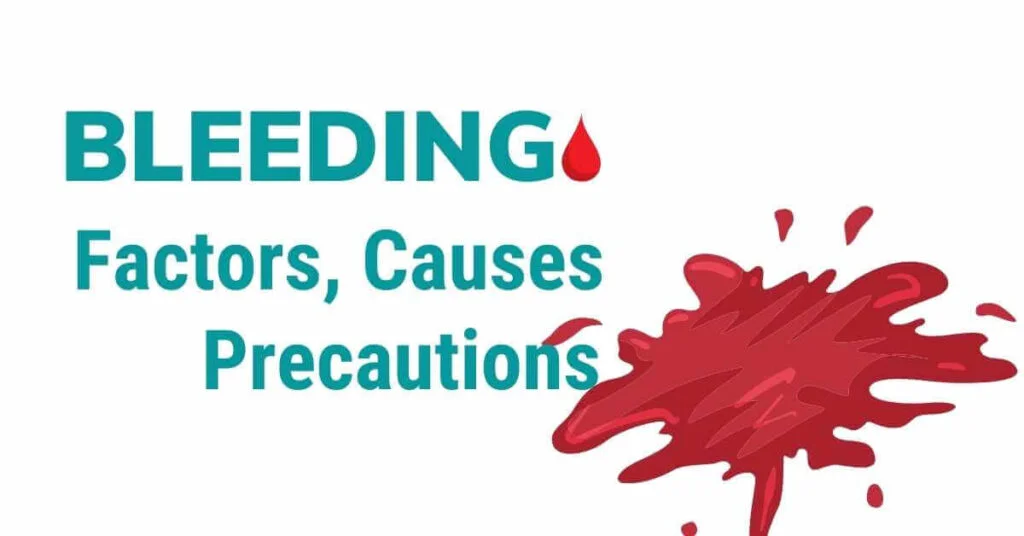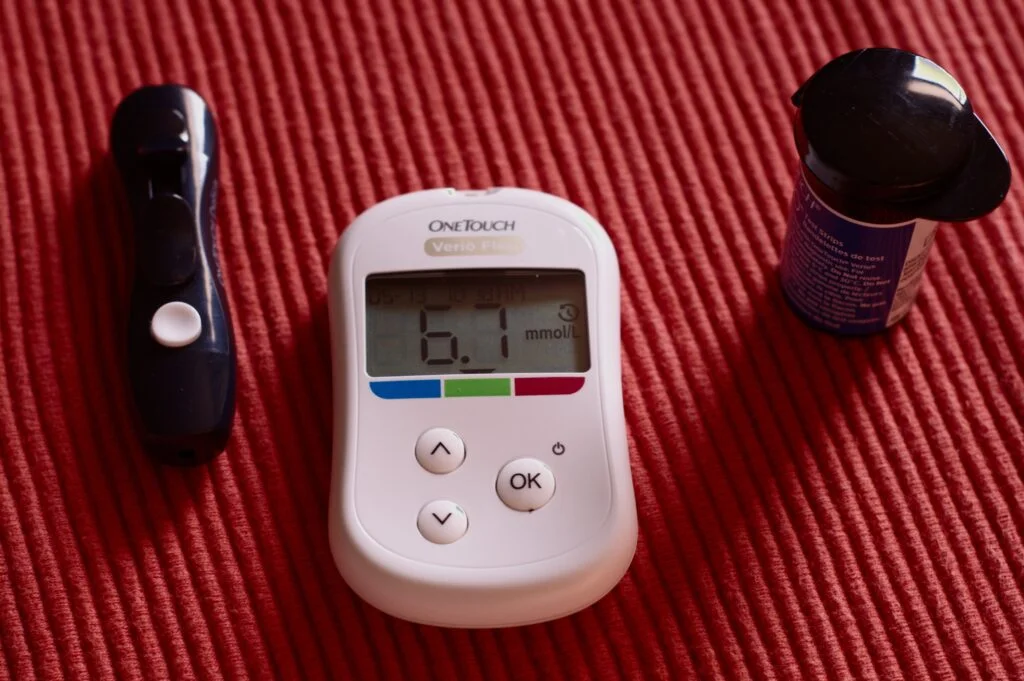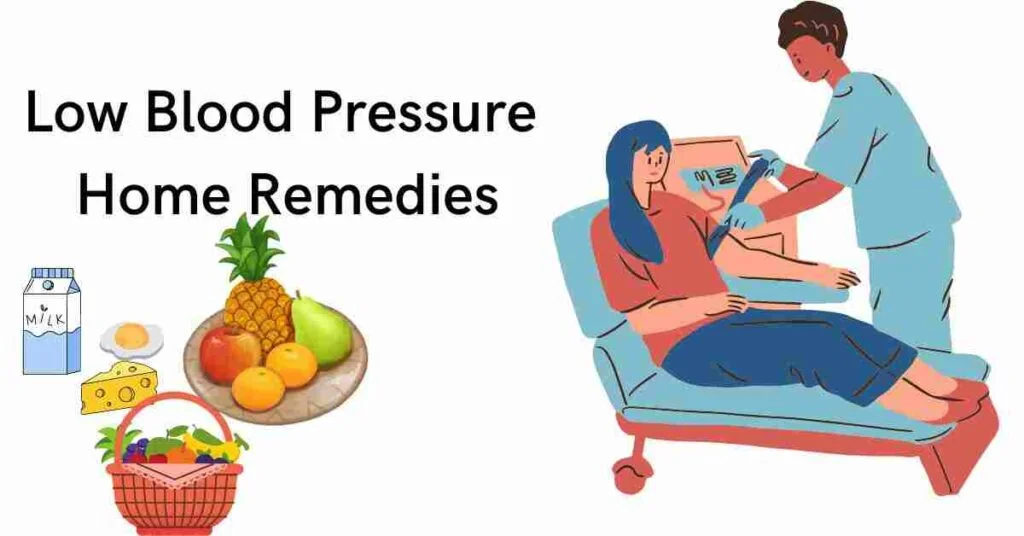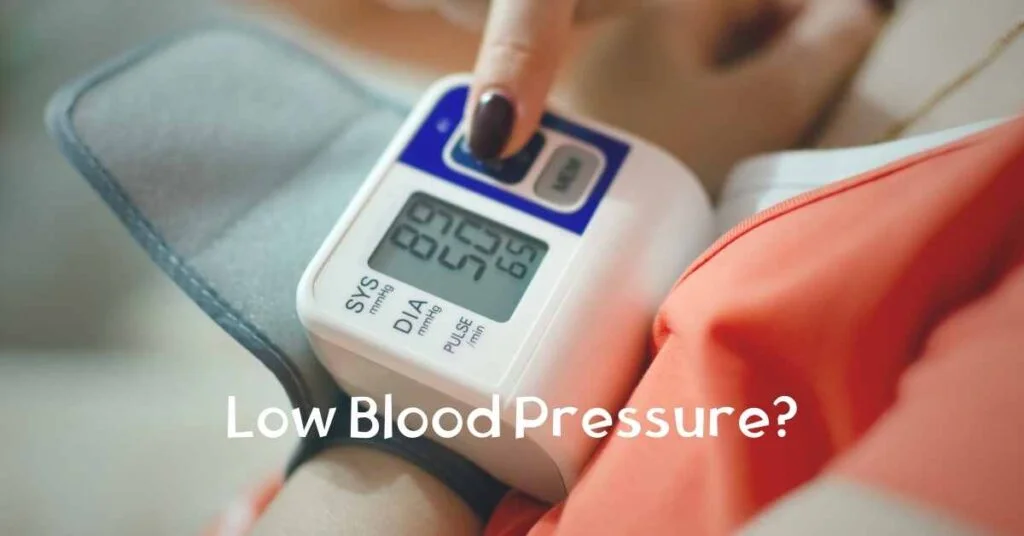What is bleeding precautions?
Bleeding precautions means one needs to take extra care when there is increased chance of bleeding or one is more prone to bleed. In normal situation, bleeding usually stops within 3 minutes to 5 minutes as in normal way to prevent bleeding blood starts to clot in the cut area within 2 minutes to 8 minutes. So naturally bleeding stops. But there are several medical conditions when the normal mechanisms of body to stop bleeding fails. As a result, emergency situation can arise.
Bleeding can occur both externally and internally. When bleeding occurs externally everyone can see it and it is easily noticeable and treatable. Mostly, external bleeding occurs due to injuries, trauma, etc. When bleeding occurs inside our body then it is called internal bleeding.
In case of internal bleeding, as it is inside of our body, so we are unable to know the source of blood loss. In this case, we can not see the bleeding area, this is more troublesome as we are unaware about the situation. This internal bleeding is more dreadful as it takes time to understand first that bleeding is occurring inside; then it takes further time to find out the location of the bleeding. So taking bleeding precautions is important to avoid complications.
Situations when bleeding risk increases
There are many situations when the bleeding risk increases. When there is increased risk of bleeding, then it is highly important to take bleeding precautions. These situations are the following
- When there is insufficient number of platelets in our blood or there is functional disorder of platelets in our body. This could happen due to different medical and health conditions.
- When there is blood vessel disorders, in this condition blood vessels in the cut area, fails to contract to stop the bleeding naturally.
- When there is insufficient red blood cells (RBC) in our blood then bleeding is unable to stop. Because during blood clotting process in cut region RBC creates a meshwork to stop further outflow of blood.
- When there is insufficient production of blood clotting factors, for example in liver failure or in some genetic disorders. In this cases bleeding chances increases very much.
- When there is genetic blood disorders (inherited) like Hemophilia, here the blood clotting fails to act.
- When one is under blood thinning medications like Warfarin, then there is a increased chance of bleeding.
- When one has severe anemia, there is an increased chance of bleeding.
Bleeding precautions platelet count
Normal platelet count in our blood is 15,0000 to 4,00000/mm3. When the platelet count drops below 50,000/mm3, there is increased chance of bleeding. Not only that, if the platelet count falls further that is below 20,000/mm3 then spontaneous bleeding occurs. It is a case of emergency as this situation is a life threatening condition. So it is always best to take bleeding precautions if the platelet count is low.
Bleeding precautions for liver failure
Liver is responsible to produce blood clotting factors including fibrinogen, prothrombin, factor V, factor VII, factor IX, factor X. factor XI, factor XII, protein C and Protein S. When due to any reason there is liver failure, liver can not produce all these blood clotting factors. For that reason chances of bleeding increases. Body becomes more prone to bleed. So, when there is liver disease, one should take bleeding precautions to avoid future complications.
Bleeding precautions
Bleeding precautions are important to lessen the chance of bleeding. Bleeding precautions that one should follow are the following
1. Avoid pushing too hard when you are having bowel movements. Sometimes stool softener and laxatives you may take.
2. Avoid to use suppositories, tampons or enema.
3. When you notice bleeding from any area, immediately apply firm pressure to that bleeding area for at least 5 minutes.
4. Brush your teeth gently. Regularly brush your teeth.You may use soft tooth brush.
5. Avoid blowing your nose too hard. Also do not scratch inside your nose.
6. Always try to use electric razor for shaving. Avoid to use razor blade.
7. Avoid walking in barefoot. Always wear a slip or any resistant footwear for walking.
8. Be cautious when using sharp objects such as scissors, fingernail or toenail cutter, etc. Be extra careful when dealing with these sharp objects.
9. Be extra cautious in daily activities and avoid falling, bruising, any minor injury in daily life.
10. Always talk your doctor about what exercises is safe for you.
11. Avoid any kind of strenuous activity, lifting heavy objects, contact sports, etc.
Bleeding- when to seek medical help
One should take bleeding precautions as a protective measure. But it is important to note that bleeding precautions are helpful to lessen the chances of bleeding. So if the bleeding occurs due to any reasons, sometimes immediate consultation with a doctor is needed. Consult with your doctor immediately if-
- Your bleeding from any body part does not stop even after giving five minutes of firm pressure
- If you have heavy menstrual period
- If you have small red pinpoint spots on your skin (also known as petechiae)
- If you have dark bowel movements
- If there is blood in your stool or urine
- If you have headache, abdominal pain, fatigue, visual disturbance, difficulty in staying awake, drowsiness, confusion etc.
- It is important to note that if you have a major injury then emergency medical help is needed.





